Retro Replay Review
Gameplay
Donkey.BAS offers an incredibly straightforward yet surprisingly engaging gameplay loop. You take the wheel of a tiny sports car hurtling down a two-lane stretch of country road, your only objective being to avoid the donkeys that occasionally wander into your path. The core mechanic revolves around timing: as soon as you spot a donkey, you must press the space bar to switch lanes before impact, or suffer the inevitable comedic crash.
(HEY YOU!! We hope you enjoy! We try not to run ads. So basically, this is a very expensive hobby running this site. Please consider joining us for updates, forums, and more. Network w/ us to make some cash or friends while retro gaming, and you can win some free retro games for posting. Okay, carry on 👍)
What makes the game compelling is how it steadily ramps up the tension. With each donkey successfully bypassed, your car “moves up” on the screen by a single notch, shrinking the visible distance ahead and giving you less time to react. After eleven successful crossings you earn a point and the screen resets, but by then you’ve experienced the exhilarating pressure of limited reaction windows and increasing velocity.
Despite its simplicity, Donkey.BAS rewards concentration and pattern recognition. The donkeys appear at varying intervals—sometimes one after another in quick succession—forcing you to stay alert. There are no power-ups, no alternate routes, and no hidden shortcuts: just you, your reflexes, and an ever-tightening window to dodge your four-legged adversaries. This bare-bones approach makes every near-miss feel like a minor victory.
Graphics
By today’s standards, the visuals in Donkey.BAS are rudimentary ASCII and simple CGA-style block graphics, yet they possess a nostalgic charm that harks back to the dawn of PC gaming. The road is drawn as two parallel lines stretching vertically, while your car and the donkeys are represented by basic character shapes. It’s minimalism at its purest, but it served its purpose on early IBM PCs and compatibles.
The animation is limited but effective: a small shift left or right to change lanes, and a quick “explosion” of characters upon collision. There’s no scrolling background or parallax effects—just a fresh frame each time a donkey appears or is cleared. These constraints encourage your imagination to fill in the blanks, and for many players of the 1980s, that was half the fun.
Color usage is equally simplistic, usually involving a monochrome or four-color palette. Yet, the stark contrast between the road edges, the car, and the donkeys helps maintain clarity, even in fast sequences. While you won’t find detailed textures or dynamic lighting here, the clean, uncluttered screen ensures that your focus stays squarely on lane-switch timing.
Story
Donkey.BAS doesn’t present a narrative in the modern sense—it was never meant to. There’s no elaborate backstory about why these donkeys roam the road, nor is there a cast of characters with dialogue. Instead, the game relies on a simple premise: steer clear of donkeys and rack up points. It’s an arcade-style premise that prioritizes immediate action over plot.
That said, the absence of a storyline doesn’t feel like a drawback given the game’s era and intended purpose. As a demonstration program bundled with Microsoft’s BASICA interpreter for IBM’s PC-DOS, its goal was educational: showcase how easy it could be to write an interactive program in BASIC. Any narrative embellishment would have been superfluous.
Still, the very notion of “driving down a donkey-infested road” provides a whimsical context that lifts the gameplay above pure abstraction. Even today, the gentle absurdity of narrowly escaping a donkey collision can elicit laughs, offering a glimpse of the playful spirit that early PC developers embraced.
Overall Experience
Playing Donkey.BAS is like stepping into a time machine that lands you in the mid-1980s PC revolution. It’s not a deep or lengthy experience—it was never designed to be—but it demonstrates how a few lines of BASIC code can produce a game that still sparks nostalgia decades later. If you’re curious about the roots of PC gaming or want to admire a piece of software history, Donkey.BAS is a worthy curiosity.
For modern gamers seeking polished mechanics, lifelike graphics, or narrative depth, Donkey.BAS will feel extremely limited. Yet for hobbyists, retro collectors, and programming students, it offers insight into early game development and the constraints of the hardware at that time. It’s educational, charming in its simplicity, and a reminder of how far we’ve come.
If you acquire a vintage IBM PC or a DOS emulator, launching Donkey.BAS can be a quick diversion that takes mere minutes but leaves a lasting impression. It’s not the centerpiece of a gaming session, but rather a quaint footnote in the grand annals of interactive entertainment—one you’ll likely smile at before moving on to more ambitious titles.
 Retro Replay Retro Replay gaming reviews, news, emulation, geek stuff and more!
Retro Replay Retro Replay gaming reviews, news, emulation, geek stuff and more!
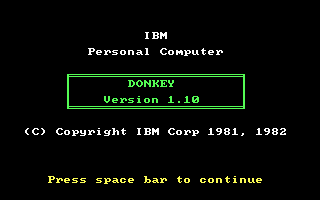

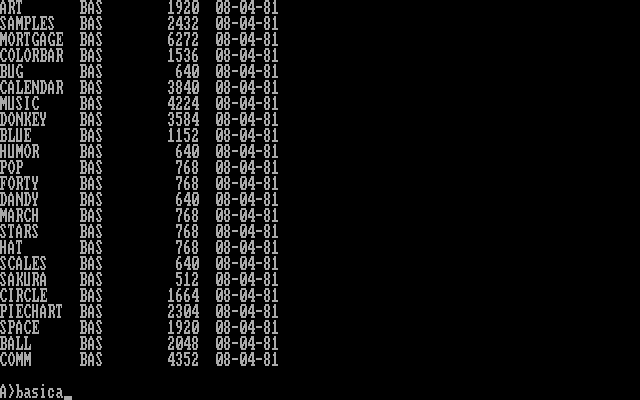
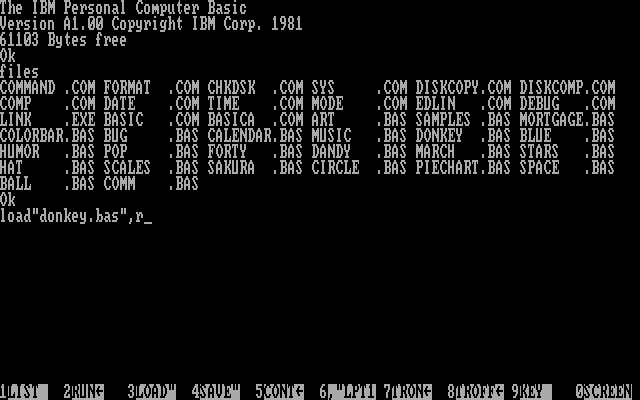
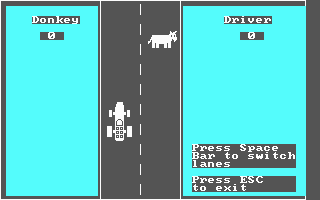
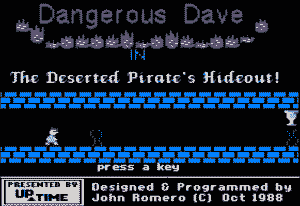


Reviews
There are no reviews yet.